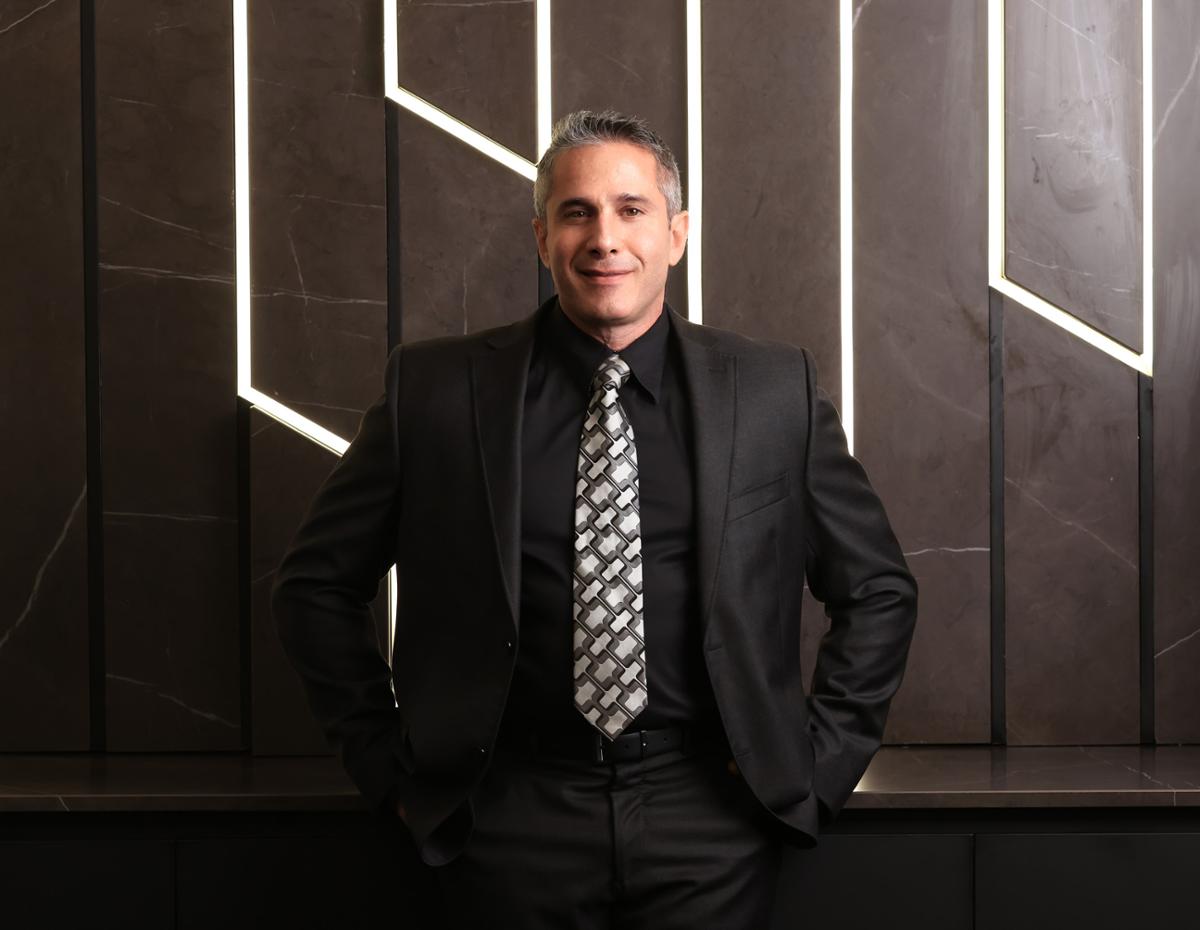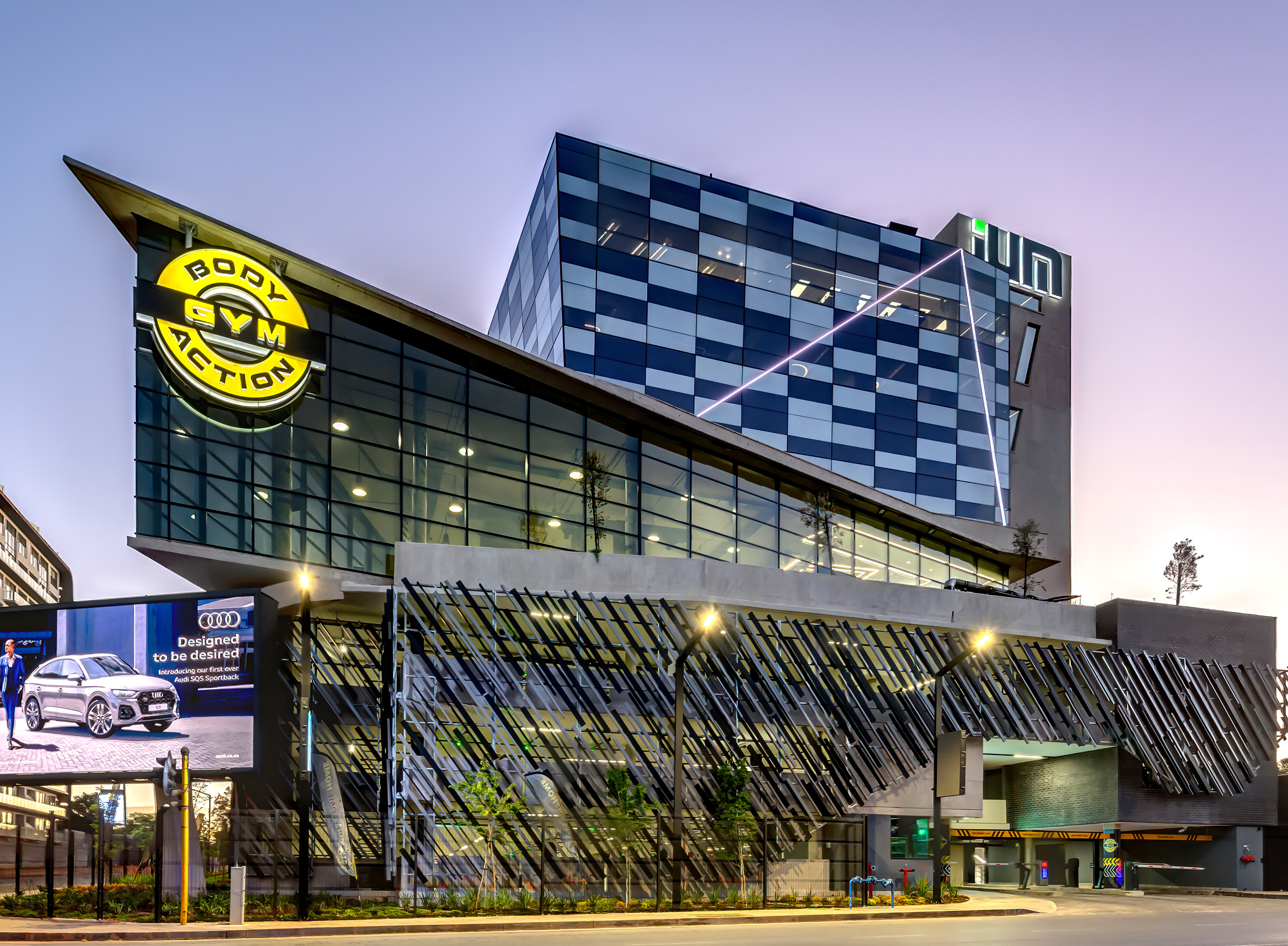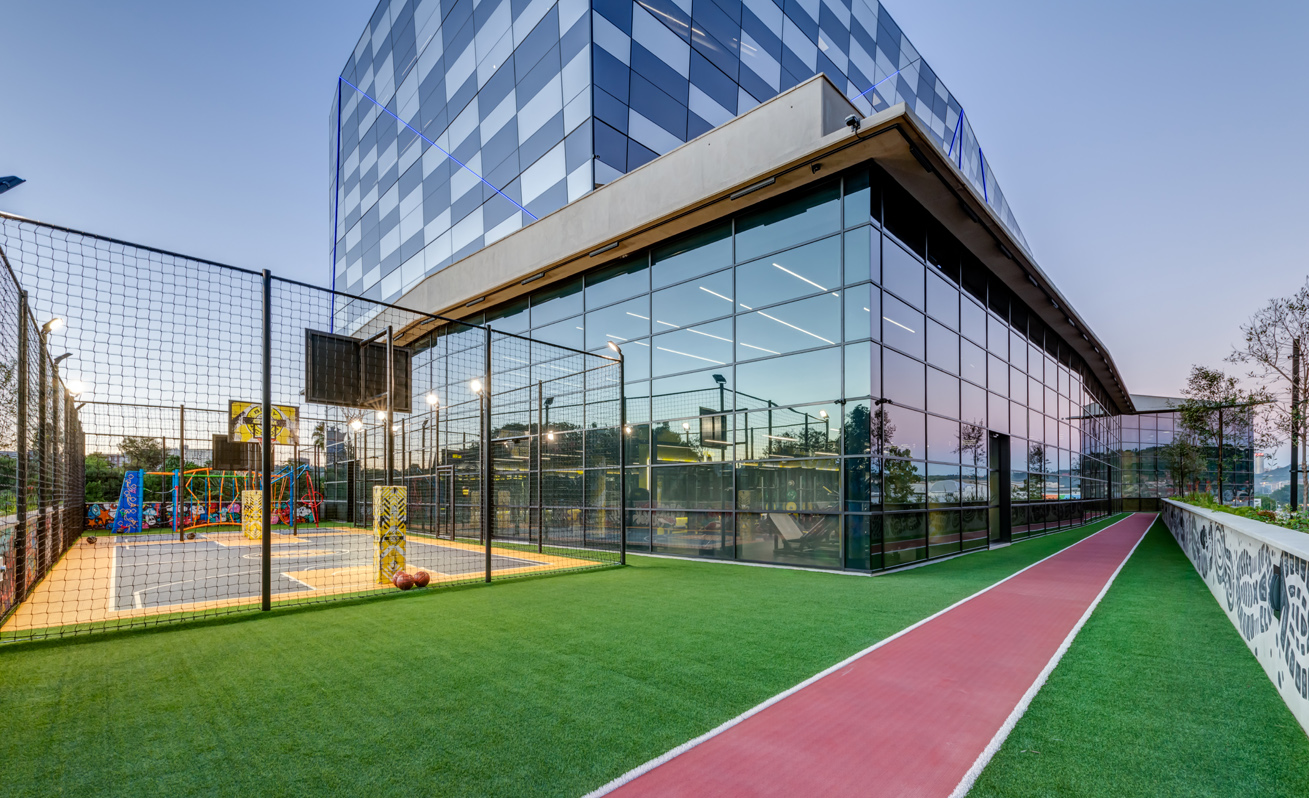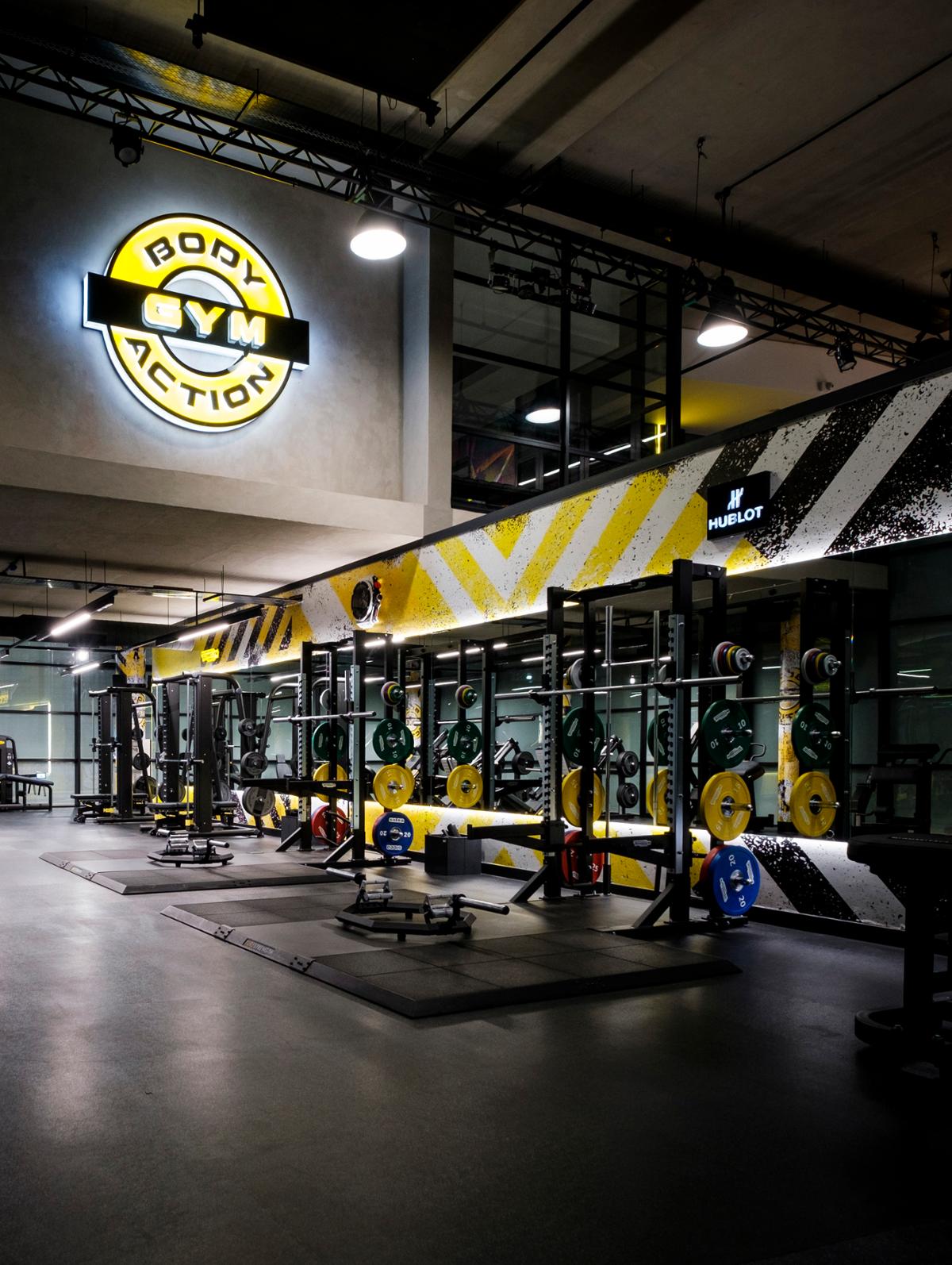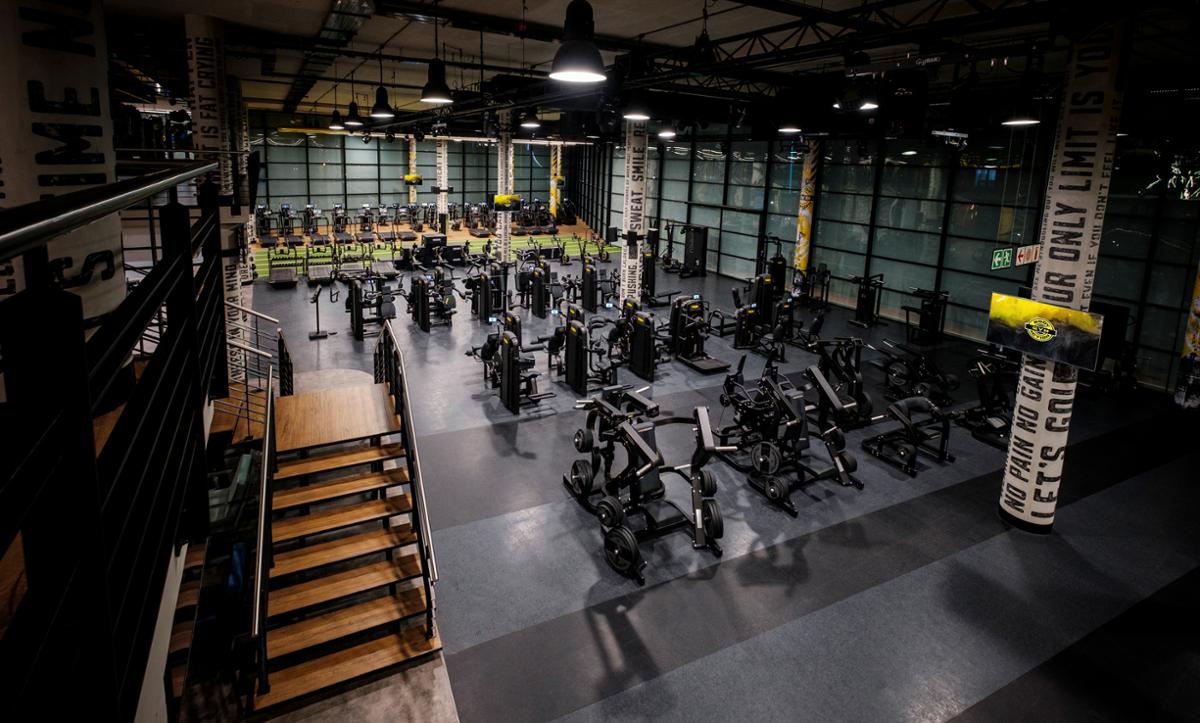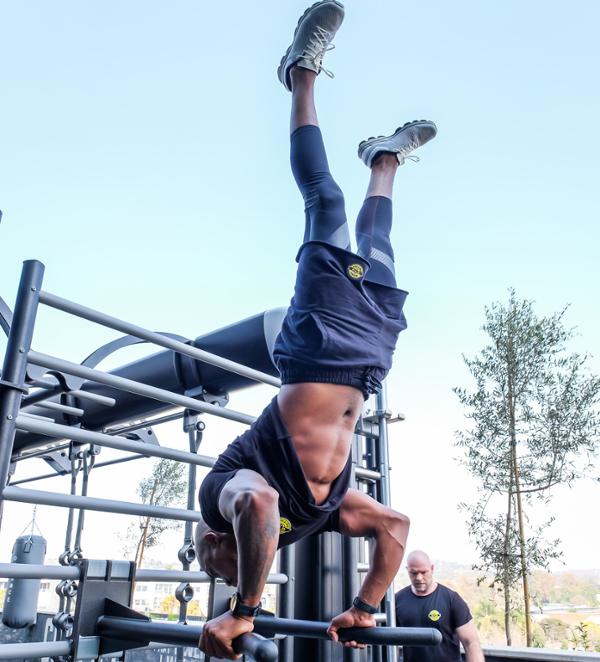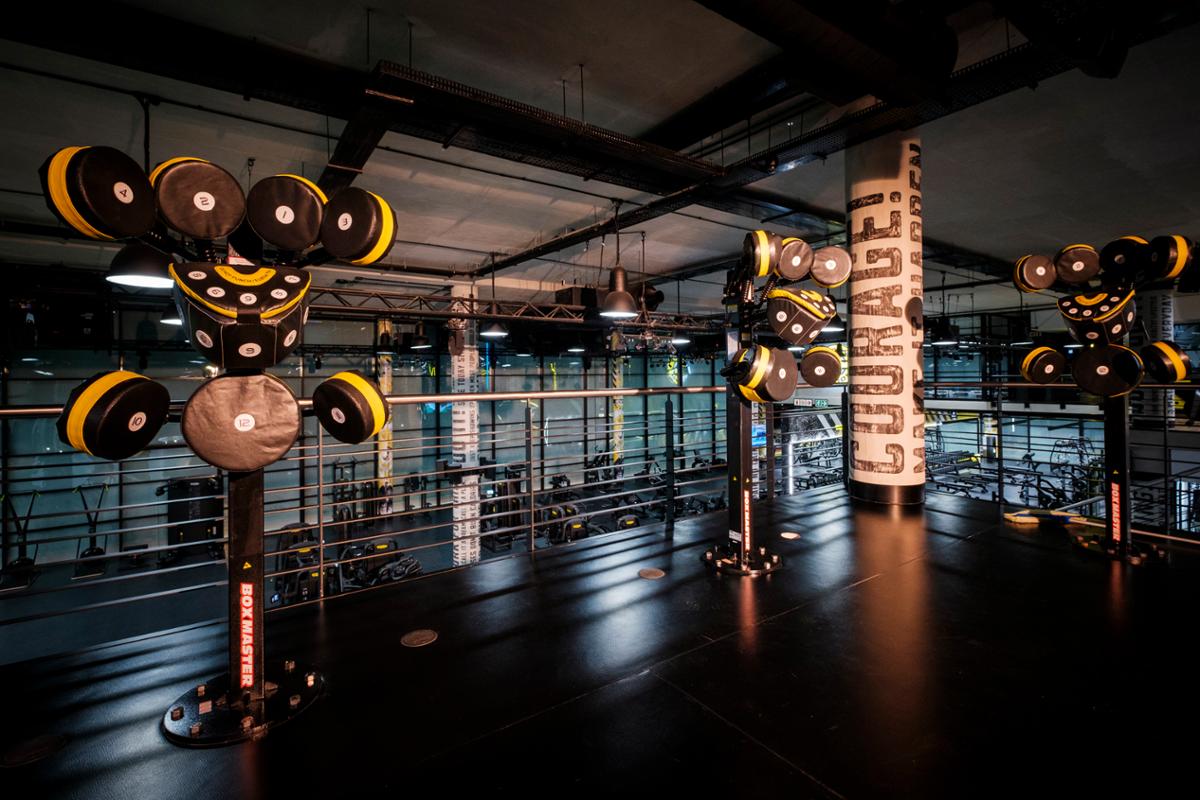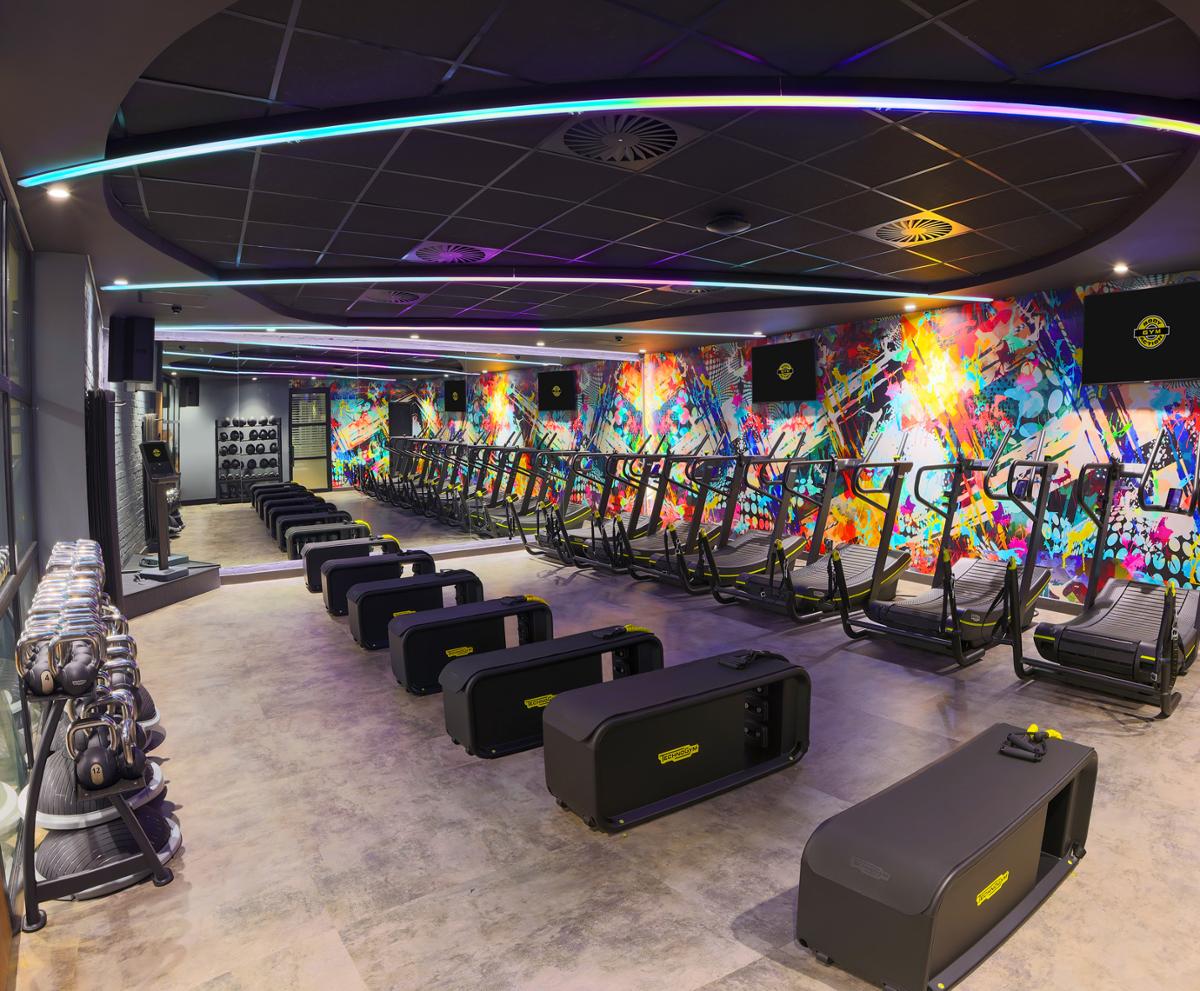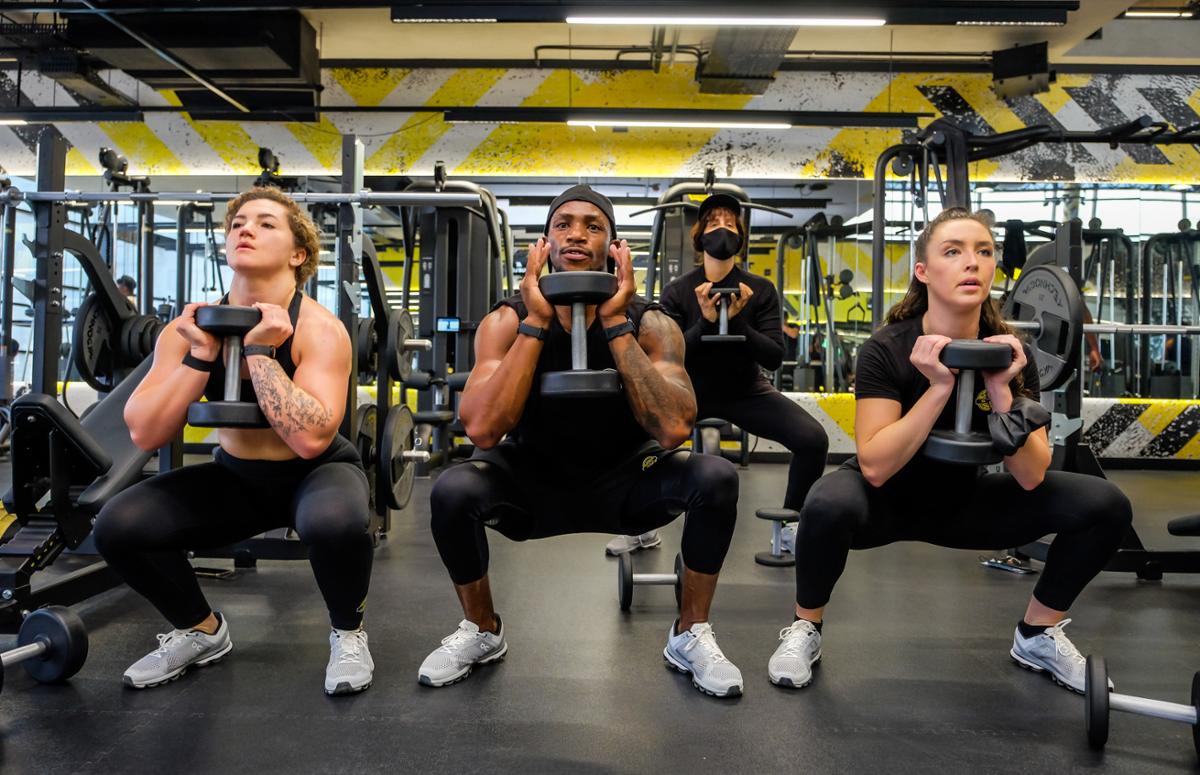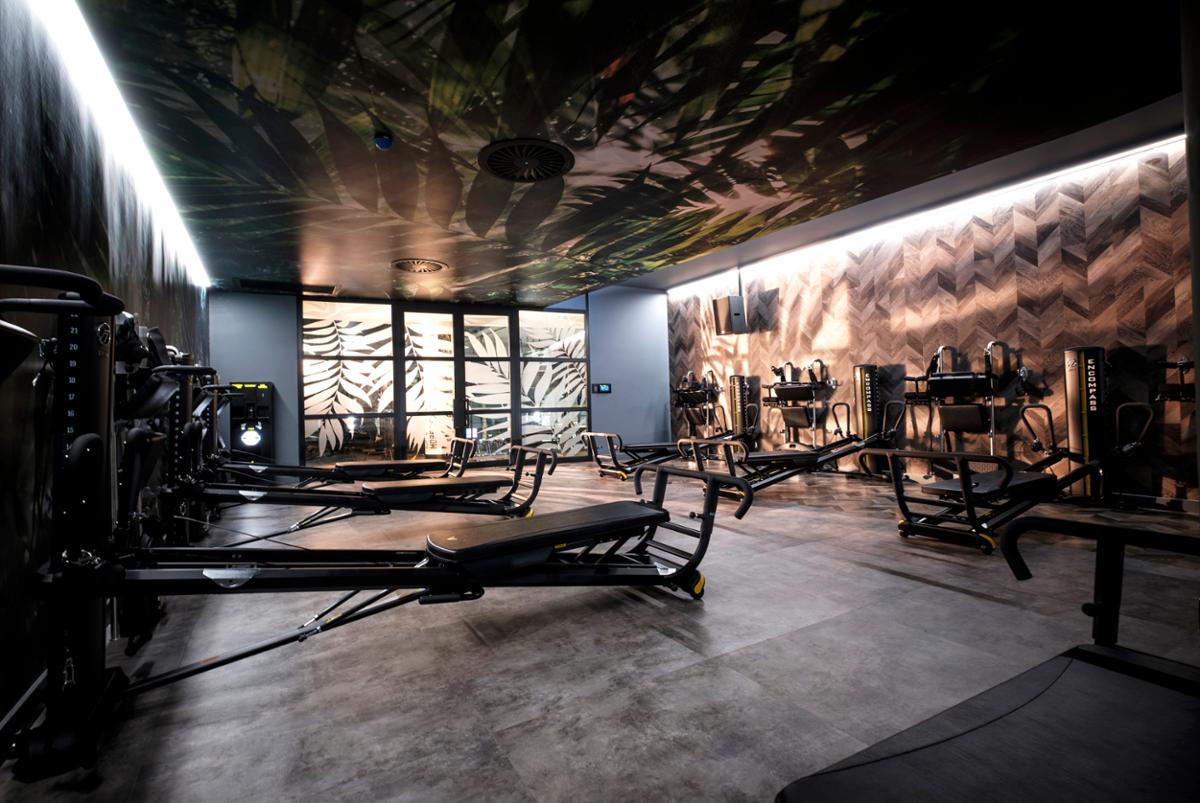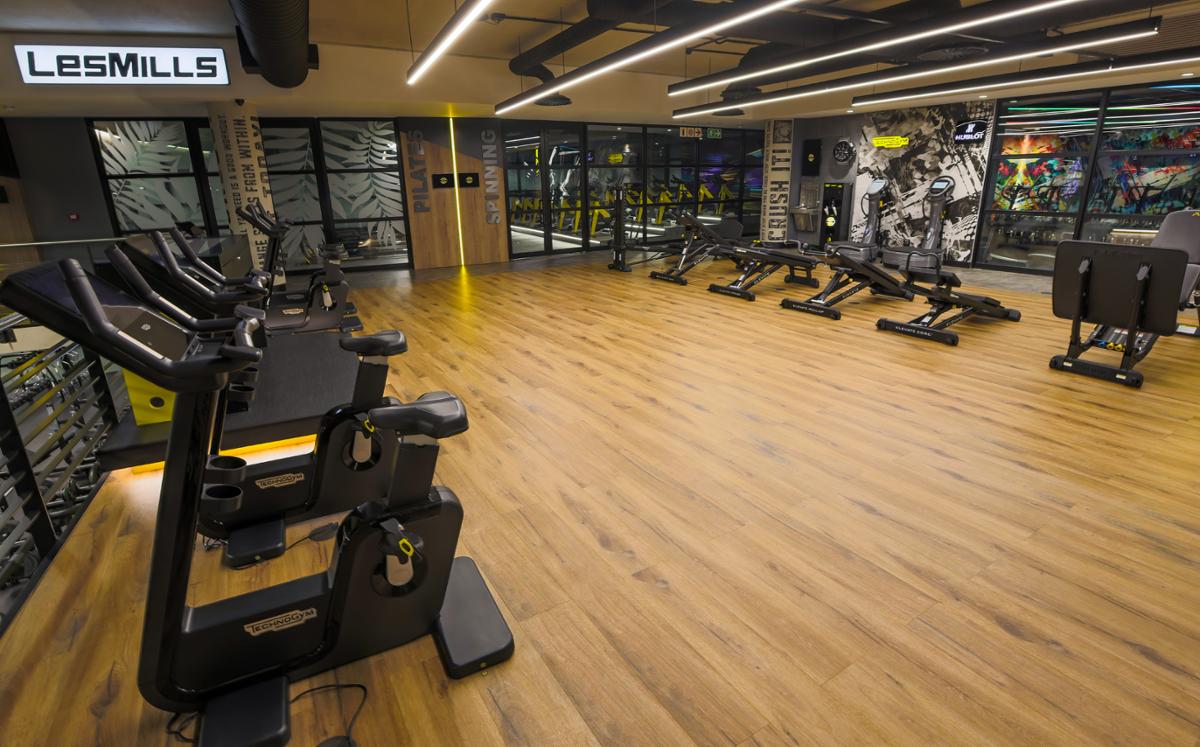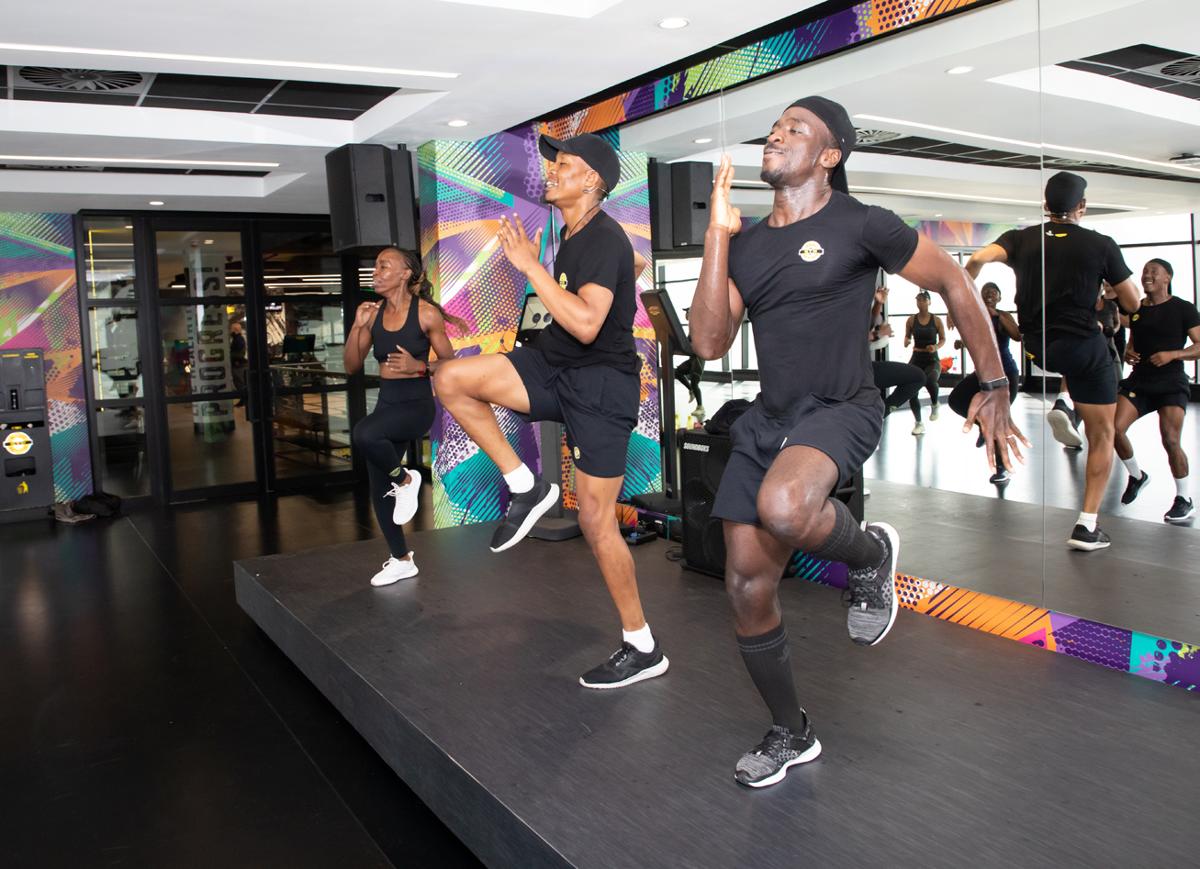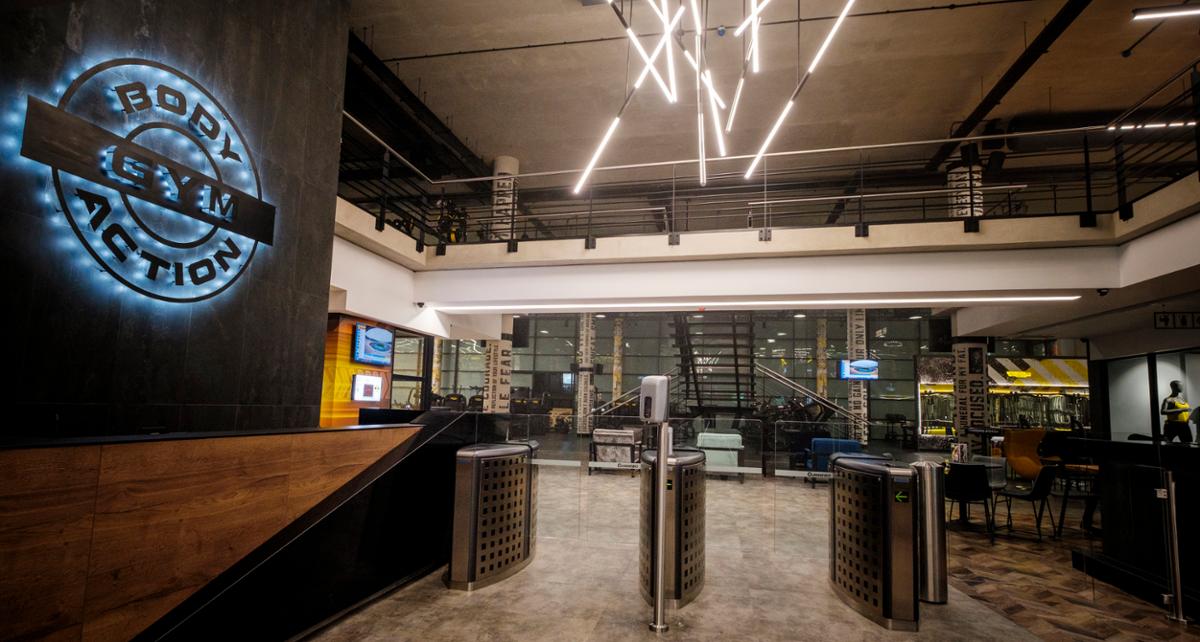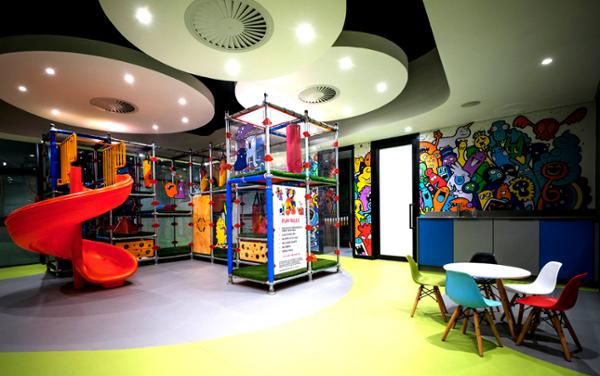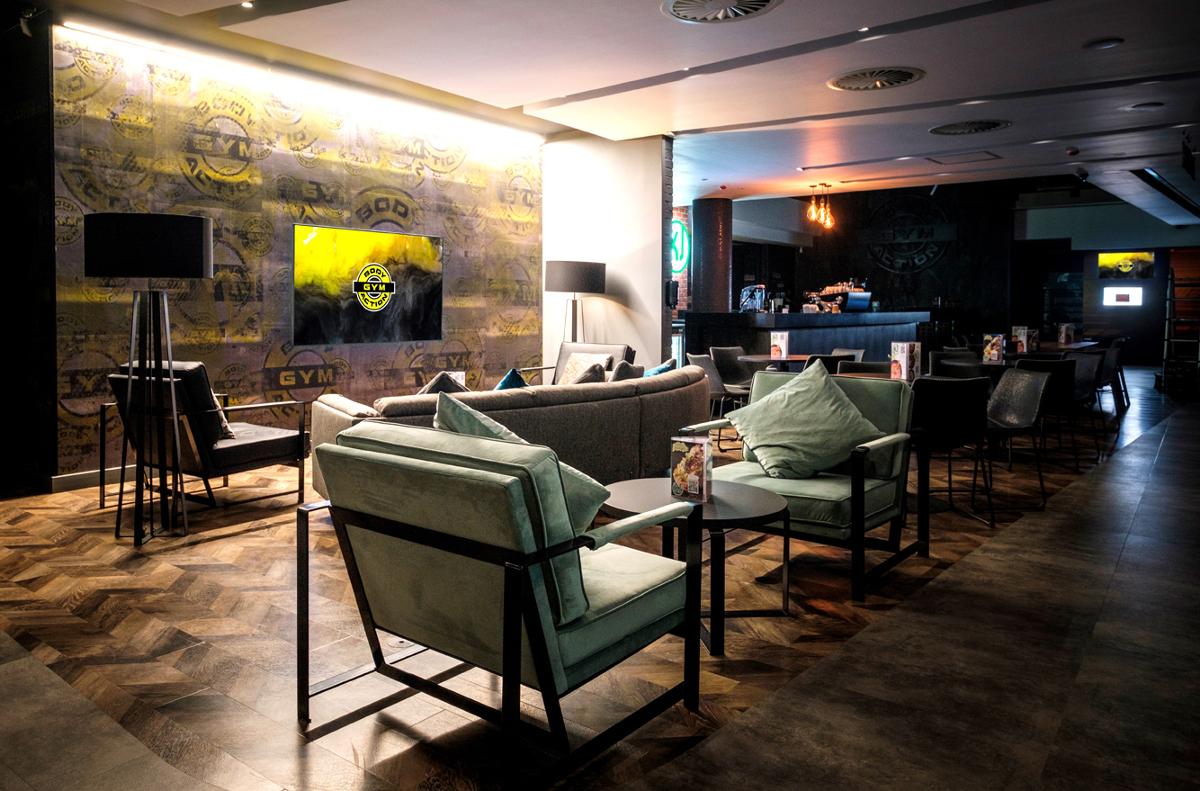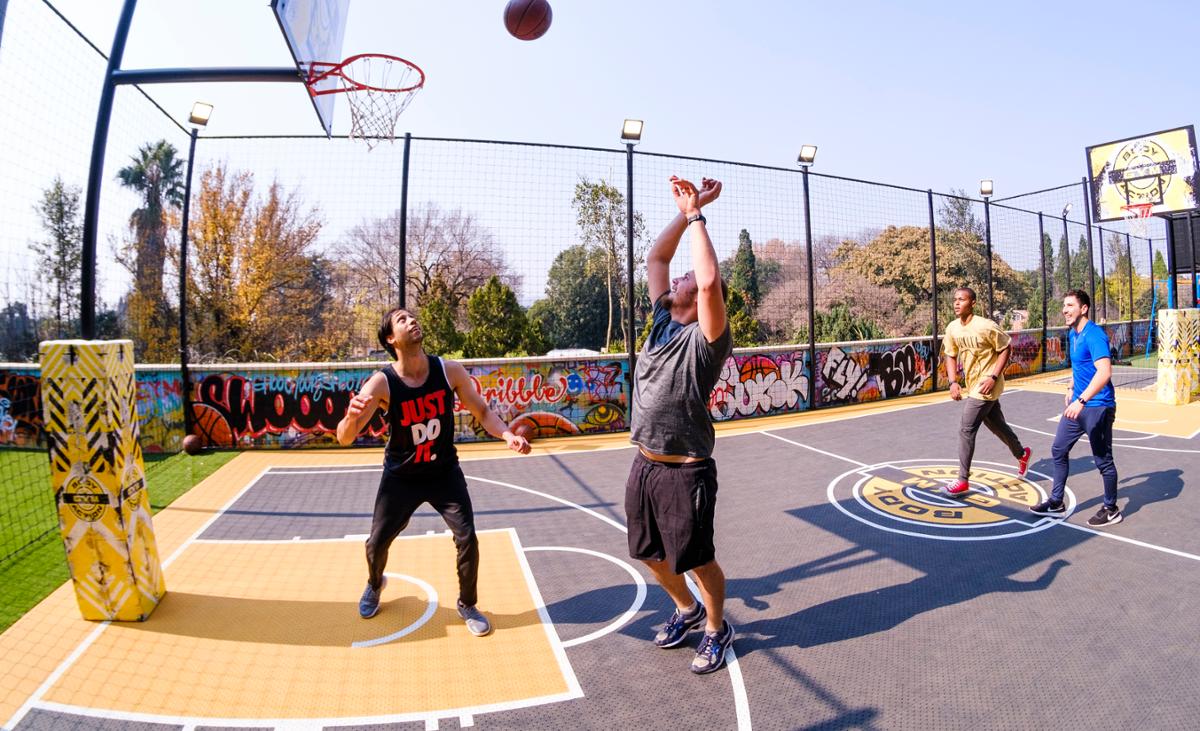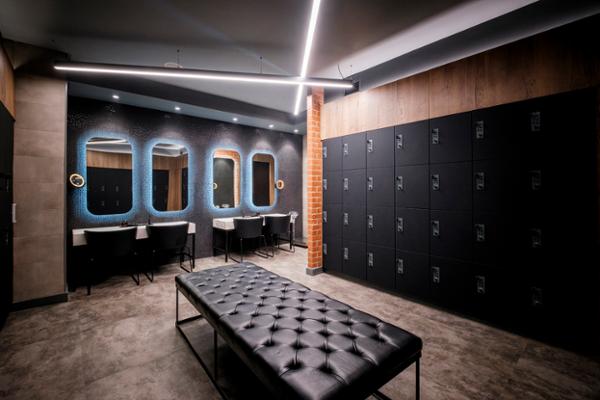When did you create Body Action Gym?
I’ve always been big into health and wellness, so in 2012, when I bought my previous office block – I run insurance and construction companies in South Africa – I decided to put in a gym for the staff.
It was 600sq m and was going to be a private gym, but about six months in I opened it to the public. We had quite a good take-up, getting to 800 members.
When we relocated, I was faced with the choice of taking it across at the same size, closing it down, or upsizing it and taking on the likes of Virgin Active and Planet Fitness – the two major players in the South African market.
My entrepreneurial spirit took over and we upsized, jumping from 600sq m to 5,000sq m. We opened in 2021 with a fit-out costing R150m (£7.7m, US$8.3m €8.5m).
What’s the vision?
To create the first six-star gym facility in Africa and then to grow a group around that brand.
Tell us about the first location
Spread over 5,000sq m, we offer best-in-class equipment, technology and group training, as well as a six-star service offering and can accommodate 8,000-12,000 members.
The gym floor is kitted out with Technogym cardio and resistance equipment, while our free weights section is divided into upper and lower body workouts.
We have a boxing academy with a full-size boxing ring – boxing classes are really popular in South Africa – and a number of studios: aerobics, indoor cycling, reformer Pilates and HIIT – which is probably our busiest studio.
In terms of group exercise, I believe we’re the first in the country to offer the full range of Les Mills classes.
We have a 50m sprint track, an artificial turf sled track and functional training space, an outdoor Crossfit-style rig for our X-Fit classes, a basketball court and a stretch area that’s divided into 4sq m sections, so everyone has their own dedicated space.
There’s also a great kids’ centre with its own play area and basketball court – you wouldn’t believe how many kids come in and play during the day – as well as customised kids’ exercise programmes.
The changing rooms offer sauna, steam and full body dryers, which dry you off by blowing hot air from three sides. They’ve been the biggest hit! We also infuse the air with scent: in the men’s changing room it’s Jean Paul Gaultier for Men; in the ladies’, Jean Paul Gaultier for Women. And then in the main gym, we use an Italian brand of air fragrance called Dr Vranjes. We have its lime and ginger scent blowing through the spaces.
There are other little touches throughout, too: charging stations for cellphones all over the gym, couches and lounge areas. We’ve even got arm wrestling tables as a fun addition, and you’d be amazed how many people do an arm wrestle just after a workout!
Then at night, our gym takes on a club feel: we have our in-house DJs playing the latest mixes with smart lighting, lasers, strobes and haze machines. It’s an amazing vibe to work out in. And then once a month we run a three-hour cardio event where members rotate through each studio doing group classes with different instructors, ending up with giveaways and a little dance down at the bottom of the gym with the DJ.
All this is included in our membership. Personal training costs extra. There’s also a clothing shop with our own sports clothing brand called Live Fit and a health café called the Kilojoule Café.
Bigger corporates might not have done all of this – they would likely have focused more on cost and return – but this is my baby and I’ve devoted a lot of time and attention to getting the details right.
What’s the feel of the club?
In the old days, everyone knew everyone at the gym and I’ve tried to bring that back. Ours is a large gym, but it’s like a big family: you can feel the camaraderie and friendliness. That starts from the top.
Fitness has always been part of my life, helping me overcome a lot of my own personal challenges – not least a major superbike accident in 2018 which led to me having four operations.
I’m in the gym every day, sometimes twice a day. I train with members, run sessions for them, involve people while I’m training. I think the team follows my lead.
We’re also well-staffed: we have floor custodians, managers, induction coaches and technical guys on the floor who can show members how to use equipment. If we see someone doing something wrong, or if they don’t know what they’re doing, we’ll go up to them and help.
Across multiple industries, personal service has gone: it’s all call centres and bots. But people want to be around other people. We’ve focused on delivering that, and I think it’s what makes our gym special.
Tell us about your induction coaches
With Technogym’s Diamond Black equipment, everything integrates into the cloud, wirelessly connecting our equipment to our members’ profiles through their Mywellness wristbands and app. Every gym member, therefore, gets at least two to three complimentary sessions with an induction coach, in which we introduce them to the technology behind the equipment and how to use it – otherwise they’ll just press ‘quick start’.
Our younger members have been quick adopters. They love all the tech! We’ve initiated a local school sponsorship programme for students from grades eight to 12 (12-18 years-old) and the option of having personal trainers monitor their progress, customise training programmes and tailor their diets is a big attraction for them.
You don’t have to pay to get a training programme or diet plan though, as our induction coaches are fully trained in nutrition. For those who are shyer, we also have self-service Technogym kiosks throughout the gym, where you input some information and get a training programme and diet plan based on your goals.
And that’s key for us. We have a huge focus on educating members about what they eat, helping them understand that training is only a small part of getting the results they want. If you want to make a difference, you have to change a lot of things: the time you go to bed, how much sleep you have, what training you do, what you eat. You also need to have a goal in the first place, which too many people don’t have.
What’s the market like in South Africa?
The gym market is dominated by Virgin Active and Planet Fitness and that’s because of Discovery – the country’s largest privately-owned medical scheme. Its Vitality programme is a longstanding rewards scheme that’s linked to your health: the more you go to the gym, the more points you get, and you can use those points to buy plane tickets, get free meals at restaurants, get subsidised petrol and groceries and so on. But it all started with subsidised gym fees.
Depending on how active you are and what additional Discovery products you purchase, you can get 75–100 per cent of your gym membership paid for by Discovery. All of a sudden, gym membership doesn’t cost you R1,000 a month ($58, £55, €58), it costs you R250 ($14, £13, €14), with Discovery paying the balance to your gym on your behalf. All you need do to qualify is to keep training.
However, there’s a drawback from an independent operator perspective: as things stand, Discovery won’t subsidise anyone other than the two major players. It will give Vitality points to members who train with us at Body Action Gym, but it won’t give us the financial subsidy.
It makes it very difficult for privately-owned operations like ours to enter the market, because we’re trying to compete against a heavily subsidised model that has suppressed membership fees in the market for many years. People in South Africa think gym membership should cost R295 a month – any more than that and it’s seen to be very expensive – without really understanding that Discovery pays the other 600-odd Rand to Virgin Active and Planet Fitness every month on their behalf.
In August last year, I lodged a complaint with our Competition Commission in South Africa. In January this year, it notified us that the complaint has merit and that a team has been appointed to investigate. In Q1 2023, we’ll be notified of the outcome. We’re very confident Discovery will be forced to open up the subsidy model to other gyms that qualify, based on the type of gym, the equipment and the facilities they offer.
What’s your price point?
We charge R995 a month ($58, £55, €58), which in relative terms is really quite cheap.
Without a subsidy, an equivalent gym offering in South Africa would cost you R2,500 ($139, £129, €144) a month, but I’d be beating my head against a brick wall trying to sell memberships at that price, so I’ve gone in at R995.
We’ll get the numbers up and then we can look at slowly correcting the price over a number of years.
Discovery members pay R695 a month to be a member of Body Action Gym, but it’s basically my subsidy making the difference: I’ve reduced the fee for those clients in the hope that, once the Competition Commission finds in our favour, we’ll then get subsidised for these members training at our gym.
We also have lower prices for pensioners, while children who are part of our subsidised school programme enjoy free membership. Bedfordview has quite a few private schools, so we’re using this as a hook: when parents come to sign their kids up and get a tour of the gym, 30 per cent end up signing a contract.
Membership is also free for all the staff of my various companies. I’m really, really big on health and wellness, trying to get my staff to live a healthy lifestyle, so they also get subsidised personal training and are allowed to train during working hours.
And yet even with all of this, it’s still a challenge to get some of them to the gym! They sit at their screens for hours on end without moving – it isn’t good for them. So, I’ve started doing compulsory pilates sessions during the day for all staff: a quick 15 minutes in groups of 20, just to get the blood flowing back to their brains.
How is Body Action Gym performing?
It was a big risk opening before we knew what would happen with Discovery, and whether we would be part of its subsidy model, but we’re closing in on 3,000 members. It’s taken quite a while to get to this point, but I expected that: we knew it would take 18-24 months to turn a profit.
It’s also the case that while building and fitness are my passions, the gym wouldn’t exist without the resources of my financial services company. It’s precisely because my main business isn’t in the fitness industry that I was able to bring a product to market that exceeds all expectations for members.
What are your growth plans?
Bedfordview is our first mega-club and we’ll continue to evolve the offering there to make sure it’s the best it can be. I’m investigating whether I need to put in padel tennis, for example, because this sport is coming to South Africa in a big way. We may also install a circuit of Technogym’s Bio-strength electronic resistance range.
Our school outreach has also been really successful in proving we’re here for the community – that we aren’t just about making money. We’re planning to build on this with monthly 5km and 10km fun-runs, which will be free for the whole community to take part in.
Moving forward, I’m planning to open seven Body Action Gyms across South Africa, in areas where people can afford our membership fees.
I’ve already secured premises in Sandton, another area of Johannesburg, and here I also want to introduce a wellness concept, which will be something new for South Africa. There’ll be 6,000sq m of gym and 2,500sq m of wellness: indoor spa pools, saunas, infrared saunas, waterbeds, hotbeds and hot tubs, so people can spend time relaxing and working on their wellbeing.
We’ll retain ownership of the gym and wellness, but we’ll build and sell 15 floors of high-end apartments above it. The owners of those apartments will have lifetime access to both gym and wellness – personal training will cost extra – and then the club will also be open to the public. I’m going to knock down the building that’s there now and start from scratch, breaking ground in 24 months.
It will take around 18 months to build, so we’ll open this club in roughly three-and-a-half years from now. I don’t like being a tenant – I always own my buildings and like to build the spaces myself – so things take a little longer as a result.
It’s all mapped out beyond that, too: the third gym will be in Cape Town, the fourth in Pretoria, the fifth in Umhlanga – probably within mixed-use developments, as it’s the best way to maximise ground space.
I’ll build all these gyms whatever happens, but things might move on a bit faster if the Competition Commission finds in my favour. If I move on to an equal financial footing with the two main brands, I’ll be more confident and might push on with two builds at once.
Virtual tour: www.bodyactiongym.co.za








